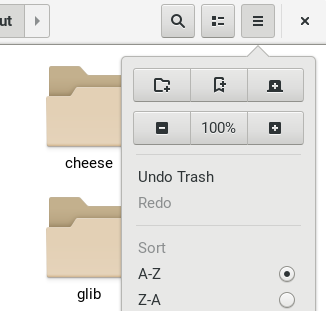Has Ubuntu made the right decision to drop Unity?
Now that the dust has settled and the shock for some people has subsided I think it's time for me to give my two cents about this subject of Ubuntu changing from Unity to Gnome.

When Ubuntu was first released in 2004 the default desktop environment was Gnome 2. Everything was all rosy until 2011 when Ubuntu parted ways with the Gnome desktop because its new version Gnome 3 drastically changed its desktop design. The world became misaligned and its inhabitants held their breath and waited for the destinies of Ubuntu and Gnome to once again become intertwined.
For some, the following lines brought sadness and dismay but for others, it was a welcome return for the Gnome shell.
“I’m writing to let you know that we will end our investment in Unity 8, the phone and convergence shell. We will shift our default Ubuntu desktop back to GNOME for Ubuntu 18.04 LTS.” Mark Shuttleworth, Founder of Ubuntu and Canonical, 5 Apr 2017
Converge this!
Our story begins in 2011 with an idea that so got into the psyche of Canonical that some may speculate that only Dom Cobb could have accomplished such a feat. (Confused? Join Amazon Prime and watch Inception). Mark Shuttleworth the founder of Canonical, the company behind Ubuntu led the charge with this idea pouring a good junk of his fortune into it.
The idea? Convergence. The concept to unite them all; desktop, phone and tablet all sharing the same familiar interface and the promise of a seamless experience across all devices.
Ubuntu’s website gives an example of convergence:
“…drafting an email on your phone during your journey to work, and then when you arrive at your desk you can plug the phone into a monitor and continue composing the same email in a desktop environment.”
Essentially, convergence was about being able to use the same launcher, hud, top menu bar, menus and workflow on all devices whether using a mouse and keyboard or a touch interface. The codebase would be the same for Ubuntu across all devices.
The flawed assumption that the desktop PC was dead led many at the time to believe that the phone or tablet would allow us to do everything that a desktop PC could do. Well, almost 7 years later, let me mangle a quote from Mark Twain: reports of the death of the desktop computer have been greatly exaggerated.
Canonical wasn’t the only one chasing this idea, anyone remember the Windows 8 and associated Metro debacle? Microsoft’s version of convergence called continuum is still alive but barely. Although it might have seemed like a good idea at the time it didn’t catch on. Why?
Maybe it was because Canonical was breaking the third of the 22 immutable laws of marketing: once a mind is made up, it rarely changes. Convergence was an example of a company deciding themselves what we wanted and trying to give us a solution. The problem was that our minds were made up and convergence wasn’t what we were looking for.
Outside of the convergence bubble the demand just wasn’t there. We users are simple creatures and we are usually looking for something like this if we were to boil it down to a simple sentence: “I need the best OS for each device that just works and helps me do the things I need to get done quickly and easily.”
Who was convergence for?
Let me take you into the inner workings of most developers and engineers. It’s a dark dank place where many unspeakable things happen, where cattle are slaughtered at the altar of logic and efficiency…Ok so some of those things I just made up but I think most devs will agree that the idea of a shared codebase across all platforms is the holy grail.
This makes maintenance, development and bug fixing quicker and easier and new features become regular occurrences. I can see how convergence would have been a triumph for Canonical and in turn Ubuntu but in reality it didn’t fulfill a real need from the average Joe or Jane. Devices work in different ways which is why most of us will have at least 2 if not all of these devices.
We need desktop PCs for real work, work that requires computing power and complete applications. Currently most of us want to use a keyboard and mouse and the whole desktop layout reflects this.
Our smartphones let us get stuff done wherever we are (whether we want to or not) and allow us to stay connected 24/7. Touch screens or styluses just work and the interface is largely responsible for that. Tablets bridge the gap between the two and the popularity of active pens show that we humans are naturally wired to using our hands to create: in this case putting digital pen to digital paper.
Sure the idea of convergence works well as an idea but we currently don’t want a one size fits all approach, we want existing workflows and interfaces to improve and grow. There may be a time in the future where one device small enough to fit in our pockets is the only device we’ll ever need but that technological utopia is still in the future. Personally I’m still waiting for an interface like the one Tony Stark invented in the Iron Man movie along with a Jarvis-like assistant. Unfortunately, I think I’ll need to jump to the future for that as well…
Unity - the emblem of hope
The Unity desktop environment made its debut in 2011 when Canonical decided to replace Gnome as its default desktop environment. It was the tool that would realise the convergence idea, the world would rejoice and the cheers from celestial beings would be heard across the universe.
The focus became blurred and with phones, tablets and convergence demanding Unity’s time it seems development became splintered.
Love it or hate it but Gnome 3 was the catalyst for other projects like the Mate and Cinnamon desktop environments. Maybe if Unity 7 had been purely focused on being a solid desktop environment it would have seen huge strides in its development. Instead it got caught in the middle of the phone, tablet and convergence initiatives which were commercially unsound.
Enter Unity 8 in its gleaming mystical robes, with the audience experiencing a palpable sense of awe. The Unity 8 technical preview for Ubuntu 16.10 in 2016 looked amazing but unfortunately Unity 8 was starting to become a mythical hero primed for its entrance and sadly was destined to remain in the realms of folklore.
So much work and passion went into Unity 8, despite the obstacles. If the demand is there, Unity will be forked and Unity will live on because that’s the how the open source community roll.
Mir, you’re just collateral damage.
Until recently the X Window system (X11) has been the only custodian of handling graphics on screen and handling input from the mouse and keyboard on Linux systems. Two upstarts known as Mir and Wayland however, have been letting X know that it’s time for it to retire.
It’s going to happen to us all eventually, one day we are at the centre of everything and another we are simply observers remembering days gone by. The good ol’ X server has been a star in the Linux world but the head is balding, the joints are not what they used to be, the once sharp mind is now forgetful and retirement beckons - it’s time to slow down, it’s time to reevaluate existence. Curtains slowly come down as X takes its final bow…
In the world of technology two competing systems usually end up with a winner. It might not be the best out of the two but market conditions, clever marketing, and maybe even the planets perfectly aligning makes a leader emerge and the other system fades into obscurity. I’m looking at you Blu-ray! (or for my all grown up readers - I’m looking at you Betamax!).
In the war of the display servers the fate of Mir was always going to be tied to the success of Unity 8 but now that’s going, Mir is forced to bow out as well. By default that makes Wayland the future of the display server for Linux. Fedora was the first distro to include Wayland as the default display server recently and Ubuntu developers have confirmed they will follow suit.
Sorry Mir it’s not personal but you’re just collateral damage of the Gnome/Ubuntu reunion.
Gnome 3 was always special from the get go.
Gnome 3 is different; where lots of desktop environments began mimicking or taking inspiration from Microsoft and Apple (and still are), Gnome envisioned a workflow and stuck with it. The lack of a start menu in favour of an activities and search bar was a clever innovation.
Unfortunately, in its early years the desktop environment had issues with slowness and stability which led to widespread criticism and many users went looking for alternatives. Luckily the Gnome team stuck to their guns and in the long term, users were more willing to try a different desktop experience.
I have a confession to make, I am a Gnome 3 fan. There I said it, I’m sure after reading that they’ll be many Linux users frothing at the mouth at the mere thought of someone actually liking Gnome. Equally there will be a strong cheer leading squad getting ready to pat me on the back for choosing the best desktop environment.
The thing is, for me, if both sides are so passionate, it means that both desktop environments have worked. If you don’t believe me, check out any post on the subject, anywhere and the comments section will be full of fans from each camp dueling in a battle of words. Even the creator of Linux, Linus Torvalds threw a punch (actually a couple of punches) calling Gnome 3 an ‘unholy mess’ before eventually going back to Gnome after a year or two.
I’m sorry to disappoint but I was always the kid in the playground weighing the pros and cons of both arguments (whether that was who’s got the best trainers or who’s smarter than who) so I won’t be taking sides here. Instead I will tell you why I like Gnome 3 rather than why it’s better than Unity.

The first thing that drew me to Gnome 3 several years ago was that it was sparse, no bells and whistles, no one hundred thousand ways to customise this that and the other and no over the top animations and transitions. Look through my eyes and this is what makes it professional looking, sleek and modern.
After using it for a while, all the basic stuff was there but more advanced features could be found hidden under the minimal hood. This is probably Gnome’s best feature but also the main point of criticism. This desktop environment doesn’t want to lay everything out for you, it wants you to adjust and rethink the way you work.
Files (formerly Nautilus) the file browser app is a prime example of this; rather than icons for features, there’s just one that wants you to delve into it to find what you seek. Some might say: ‘Why’s that hidden there?’ but I say ‘learn where things are kept and soon you’ll come to appreciate the minimalism’.
Sometimes you have to make sacrifices to hold on to the things you care about.
The reunion of Ubuntu and Gnome brings joy to fans of Gnome because more developers will be working to polish and develop it. Hopefully it will become bigger and better in the process.
Assuming you’re still awake, the question remains: will cutting convergence, Mir and Unity off the team bode well for the future of Ubuntu and Canonical in general? In a word YES. It must have been a difficult decision for Mark Shuttleworth to make and it is clear how much he has invested in terms of money, support and ideology. It takes backbone to admit you are wrong.
For outsiders like me looking in, I think many of us realised the decision had to be made. Just have a look at this comic strip I posted back in July 2016. Sometimes when you have strong convictions, it’s hard to make the sacrifice. Of course the decision was based on the state of Canonical’s finances as well but it was the right choice for the company to move forward.
Sometimes we forget when using free software that the company behind those efforts has to survive financially as well and all companies have to cut losses and focus on the things that work. The focus will now be on the server, cloud and desktop offerings from Canonical.
Mark Shuttleworth calls Ubuntu the “most usable open source desktop in the world” and now Ubuntu developers can concentrate on improving the OS rather than also trying to develop a desktop environment as well. As far as how many users jump ship and how many come back to Ubuntu, I think the future looks bright for Canonical but only time will tell.
